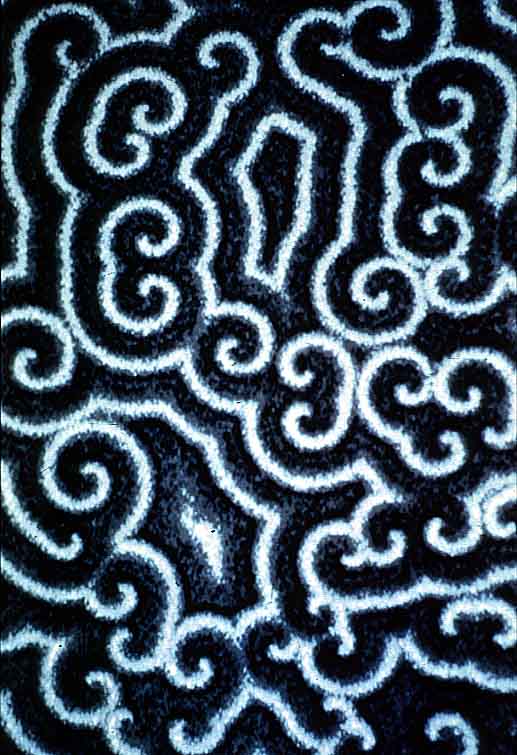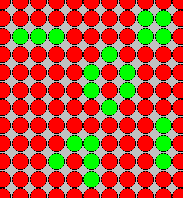

Emergence
Biology 361 = Computer Science 361
Bryn Mawr College
Spring 2006



| 
|
EmergenceBiology 361 = Computer Science 361
| 
| 
|
17 February 2006
Any universe with a finite number of locations/location characteristics and agents/agent characteristics in it and a deterministic rule that transforms the state at time t into the state at time t + 1 must either terminate or cycle.
The period of the cycle relates to the number of possible states of the universe. The maximum possible period is the number of possible states, and will be achieved if and only if the combination of the starting condition and the deterministic rule is such as to result in the universe running through all possible states.
If the combination of the starting condition and the deterministic rule is not such as to result in the universe running through all possible states then the universe will either terminate or cycle with a period less than the maximal possible period.
Our universe has neither terminated nor cycled in 15 billion years (give or take). Hence either the number of possible states of our universe is larger than some value for which estimates can reasonably be given or our universe is not deterministic.
A single Langton's ant WILL cycle over some period. Will it clean up, start over from a "mirror symmetric" position, clean up, return to starting condition?
Is it true that the more ants the smaller the number of configurations explored? So that more ants will cycle more rapidly? Will they also clean up, start from a "mirror symmetric" position etc?
We're presuming that there is some point at which the ant(s) "reverse". Is there something wrong with this presumption? In what sense might the behavior actually be continuous, with no break? What gives rise to the inevitability of returning to the starting condition via a "mirror symmetric" configuration?
| Course Home Page
| Complexity | Serendip Home |